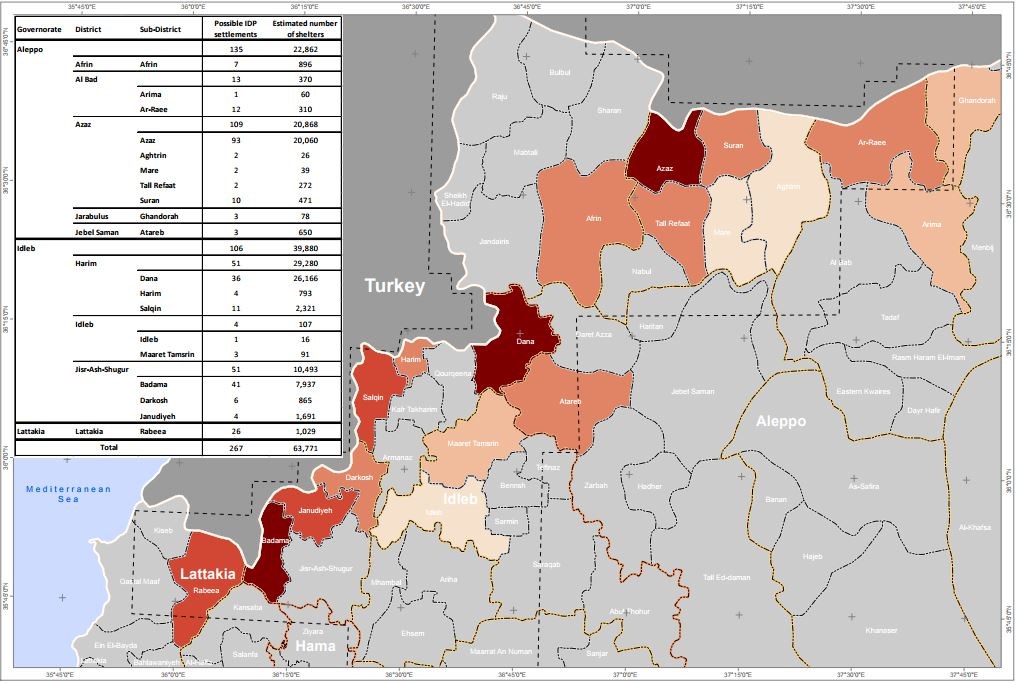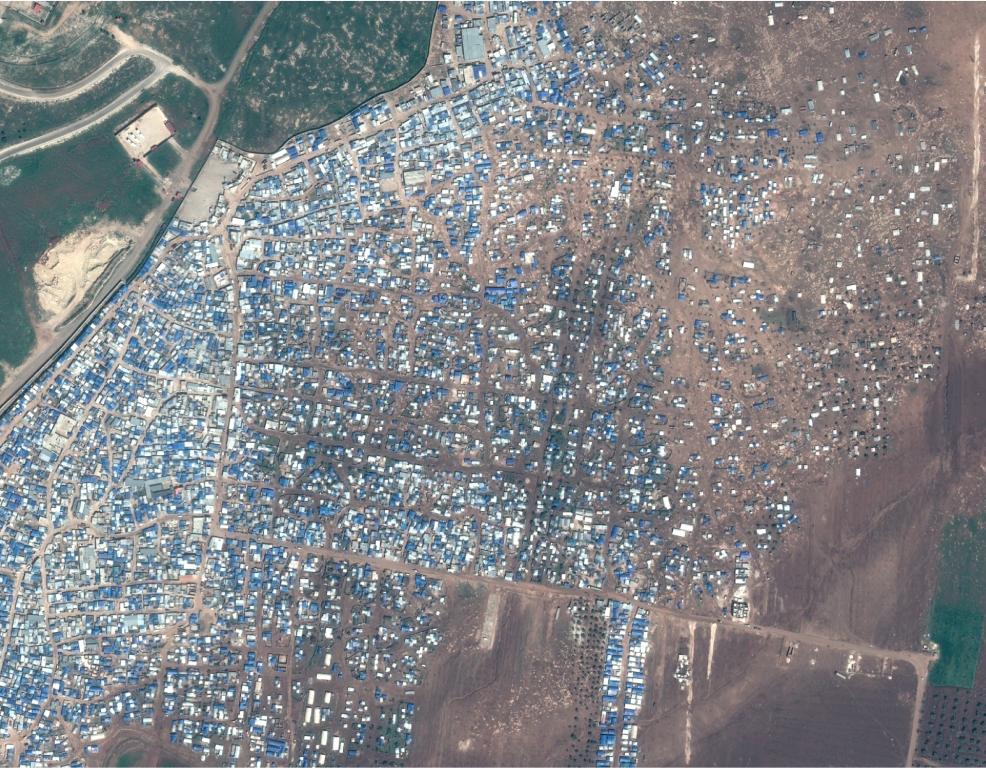Record IDP Area Mapping by UNOSAT
20 July 2017, Geneva, Switzerland – UNOSAT recently undertook the analysis of the largest area in its IDPs mapping histoy. This endeavor started in November 2016 in response to requests from partners such as the UN High Commissioner for Refugees (UNHCR) to support critical humanitarian response, and led to the scrutiny of some 11,500 square kilometers of Syrian lands. The programme focused on the Turkey borders of Lattakia, Idleb and Aleppo Governorates, as well as on the borders of Daraa and Quneitra Governorates with Jordan and the UN Disengagement Observer Force area.
Very high and medium resolution satellite imagery from DigitalGlobe, Airbus, Deimos and the European Space Agency was used, and its analysis resulted in the identification of 1,033 distinct IDP settlements, with as much as 68,414 shelters. UNOSAT found that in the north of the country, IDPs live in much larger as well as more concentrated settlements than in the south.

The validity of part of these findings was confirmed by a UNHCR-Care field survey conducted this year in Daraa and Quneitra. When comparing data gathered from the sky with those collected on the ground, the difference between the two amounted to less than 5%. This figure can be partially explained by practical necessities and methodological differences. The field survey did not take into account sites that had less than 7 shelter units since reaching all of them would take too much time. Hence, UNOSAT’s analysis complements the work of UNHCR-Care.
UNOSAT staff are always very pleased when they have the occasion to validate their results with field assessments. Opportunities for such field confirmation are too rare since the process takes a lot of time and resources. It is also sometimes simply too risky to perform when the area is in a conflict or disaster zone. For these reasons, satellite imagery is usually the preferred method to obtain primary information on IDP locations.

“Through the mapping and analysis of IDP movements, the support of UNOSAT has been critical in expanding our understanding of the situation in southern Syria. This partnership allows us to gather large amounts of accurate data in a relatively cost-effective manner, and has been crucial for validating the findings of the UNHCR-Care field survey. ” - Hester Clark, UNHCR
Today, UNOSAT continues to identify IDP settlements in cooperation with numerous partners. In the coming months we will compare the number of IDPs in these regions with past satellite images for trend analysis. This information is very important for the humanitarian community, which can in turn better organize assistance and meet the needs of vulnerable people.
Links to maps
http://www.unitar.org/unosat/node/44/2612?utm_source=unosat-unitar&utm_medium=rss&utm_campaign=maps (Internally Displaced Persons Shelters in Daraa and Quneitra Governorate)
http://www.unitar.org/unosat/node/44/2611?utm_source=unosat-unitar&utm_medium=rss&utm_campaign=maps (Internally Displaced Persons Shelters in Idlib, Lattakia and Aleppo Governorate)
Image 1: IDPs mapping in Northwest Syria, November 2016-June 2017 (UNOSAT)
Image 2: Close-up view of the Atmeh IDP camp in Idlib Governorate (Syria), one of the areas analyzed by UNOSAT (© CNES (2017), Distribution AIRBUS DS)

